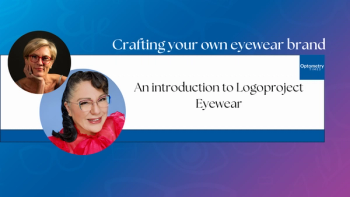
"Eye-gonomics" and computer glasses key in preventing CVS
Digital eye strain is becoming an increasingly common problem for Americans, and optician's need to be more proactive in discussing the problem with their patients. So said Michael Vitale, ABOM, LDO, NCLEC, lens division liaison for The Vision Council, who stressed the lack of public awareness of what have been dubbed "computer glasses" at Vision Expo West.
Las Vegas-Digital eye strain is becoming an increasingly common problem for Americans, and optician's need to be more proactive in discussing the problem with their patients. So said Michael Vitale, ABOM, LDO, NCLEC, lens division liaison for The Vision Council, who stressed the
Computer vision syndrome (CVS) is referenced more frequently as workloads continue to move more and more toward computer use. Encompassing a broad range of pain issues and eyestrain experienced by computer users, CVS is estimated to affect between 50 to 90 percent of people who work at a computer screen. The main culprit behind the eyestrain is the blue light emitted by screens.
"We're looking at pixels now, not just black and white print," Vitale said. "That's what's causing all that eye strain." Those pixels are emitting harmful UVB light and, as newer research suggest, high-energy visible light, which has wavelengths centered around 430 nm (+/- 20 nm). Staring into screens for long periods of time-and the associated reduced blinking-can bring about digital eye strain, symptoms of which can include red, dry or irritated eyes, blurred vision and eye fatigue.
To help combat the issue, Vitale encourages opticians to recommend glasses specifically for work, regardless if the patient uses glasses for everyday use. So-called "computer glasses" should have specialty filters with anti-reflective coating and
"What makes any consumer out there think that just one pair of glasses will work?" he asked. "They have more than one pair of walking shoes these days." It’s in their best interest if they spend a lot of time in front of screens, he said, and if the latest statistics are any indication, that pretty much includes the entire U.S. population. When surveyed, a third of respondents said they spent one to four hours per day in front of a screen. About 32 percent claimed four to nine hours was more common, while 28 percent said they spent more than 10 hours per day.
Apart from digital eye strain, CVS also includes pain-related issues that have to do with posture and positioning. Vitale says physicians need to discuss proper computer usage techniques, and he advocates that computer users practice good ergonomics. Meanwhile, opticians can begin professing the benefits of "eye-gonomics," such as keeping screen viewing distances at about an arm's length, and the viewing angle at no more than 35 degrees.
Newsletter
Want more insights like this? Subscribe to Optometry Times and get clinical pearls and practice tips delivered straight to your inbox.














































.png)


